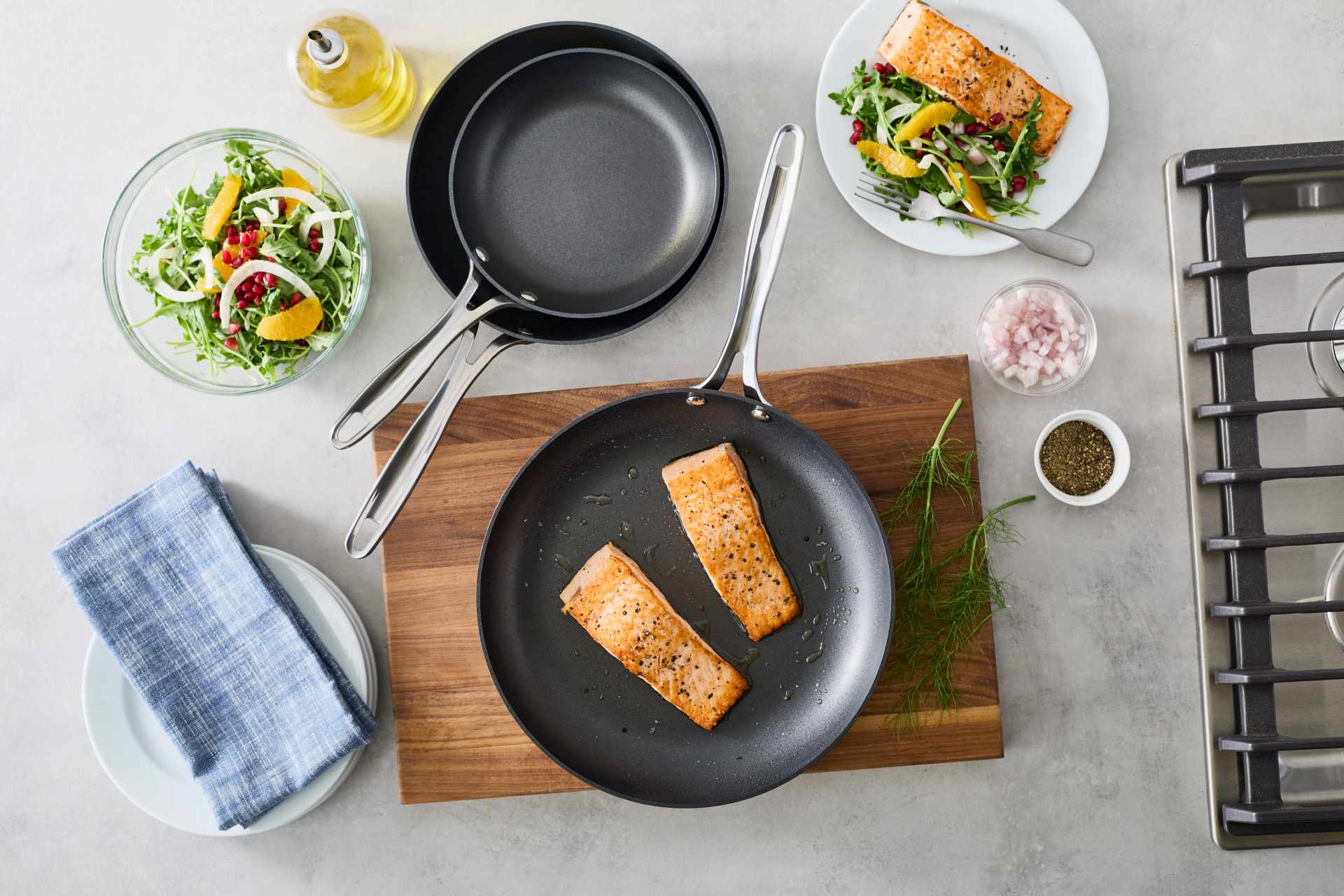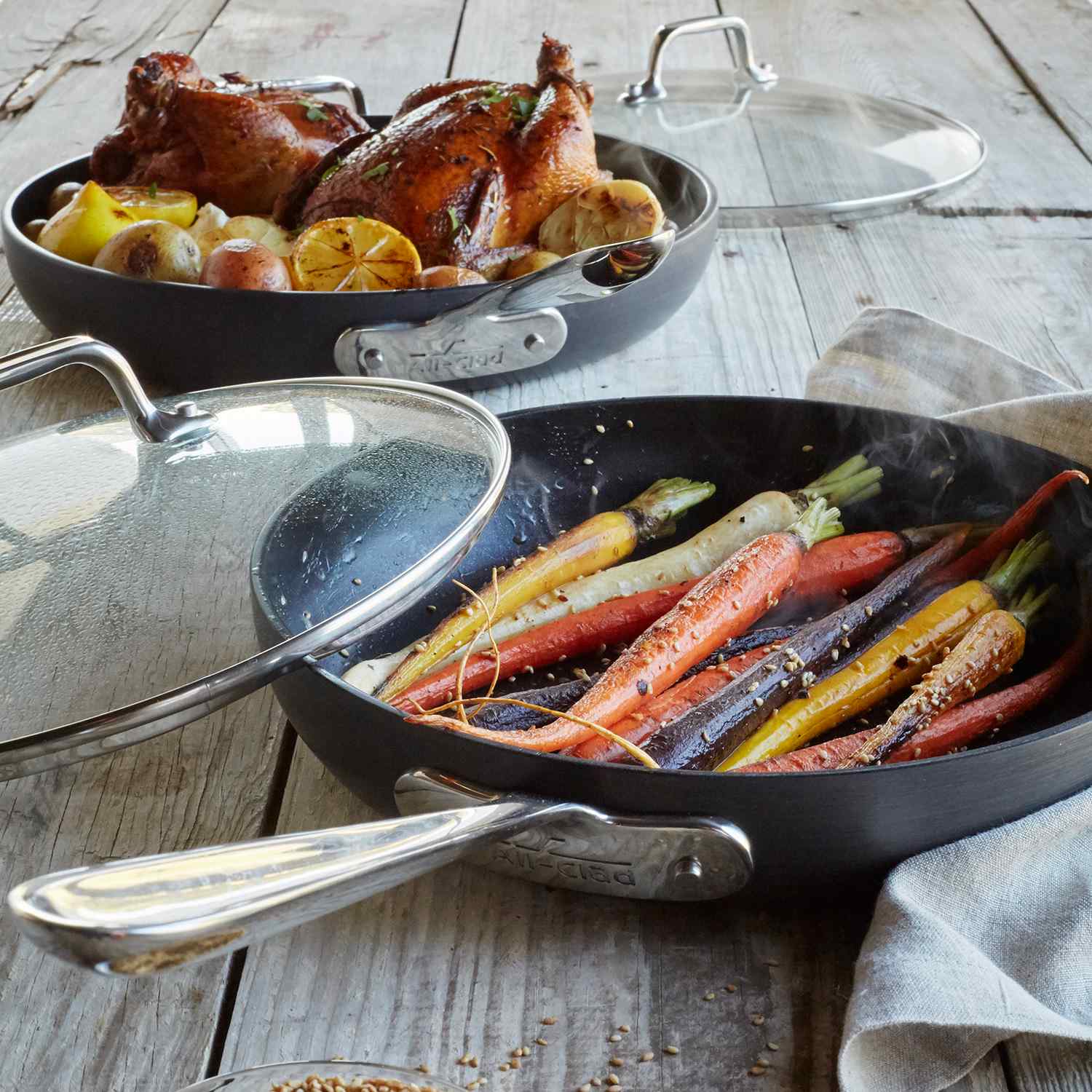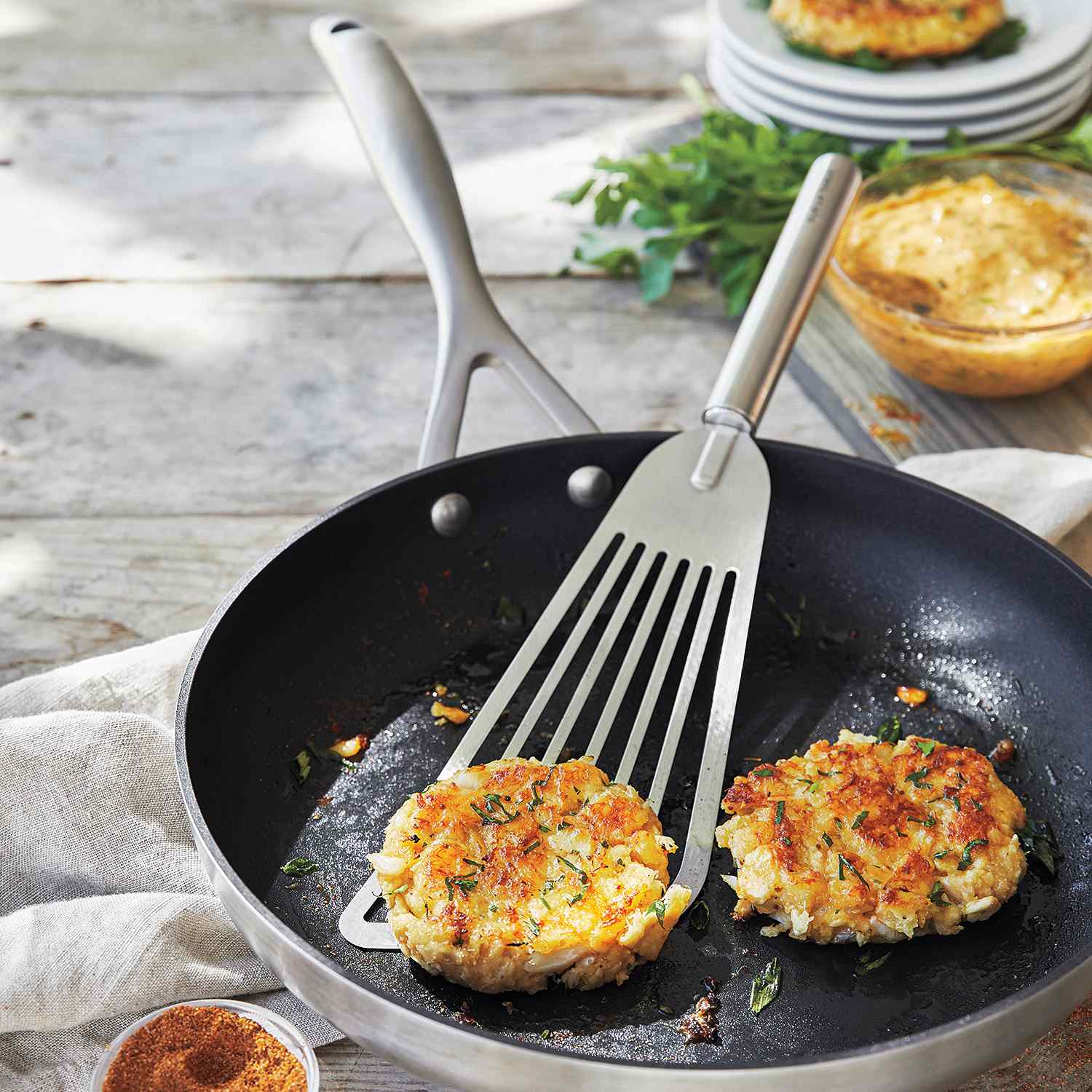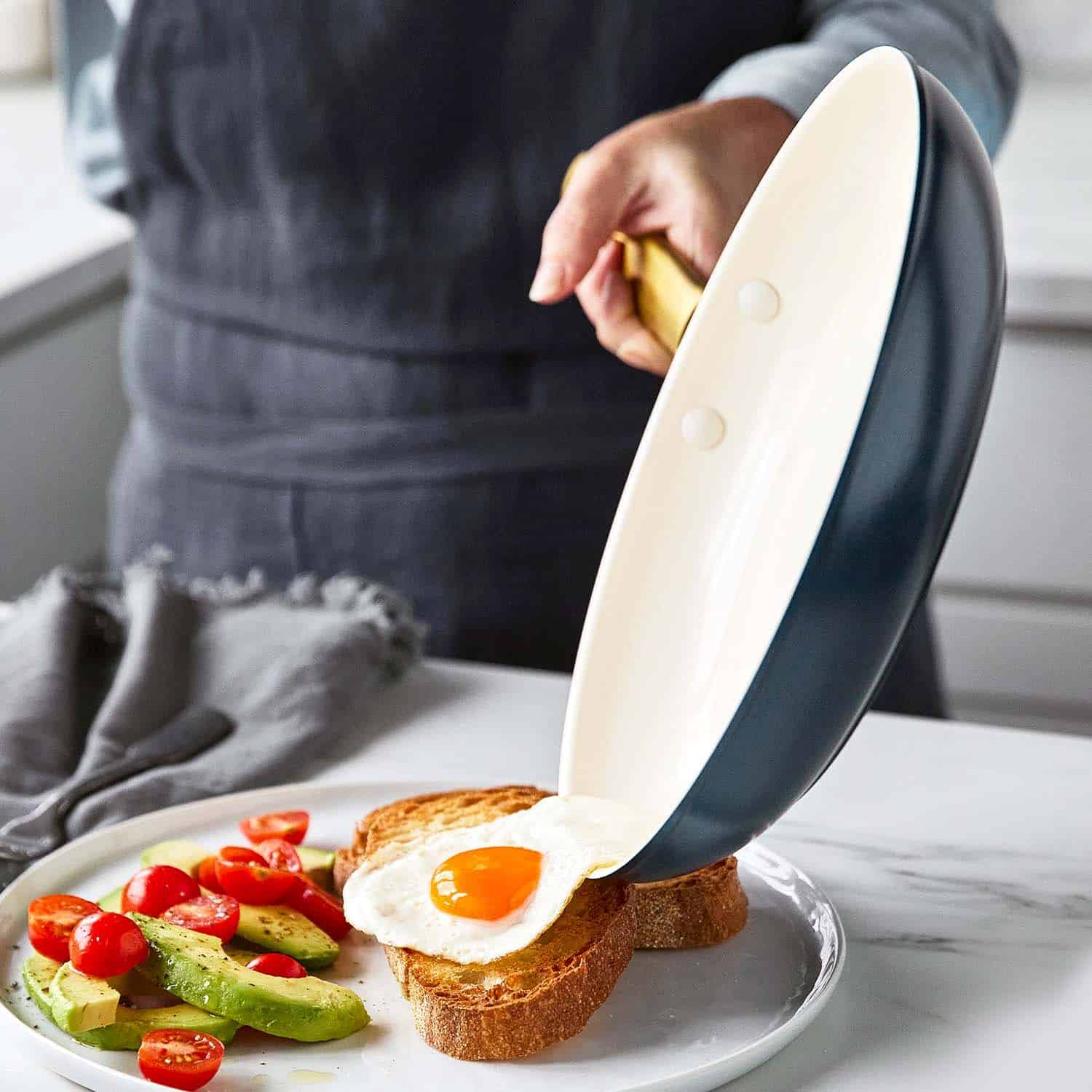Decisions, decisions.


Nonstick pans have revolutionized the way we cook, offering unparalleled ease in both cooking and cleanup. They’re a favorite in kitchens everywhere, promising to make our culinary adventures less about scrubbing and more about savoring. However, there’s a widespread kitchen habit that could be cutting our nonstick cookware’s lifespan short: using nonstick cooking spray.
At first glance, it seems like a match made in heaven—giving you extra assurance against sticking. But, this combination is surprisingly counterintuitive and can lead to unnecessary wear and tear on your cookware.
In this article, you’ll learn what nonstick cooking spray is, why it may be detrimental to your nonstick pans and the key maintenance tips to ensure your cookware remains in excellent shape for years to come.
Hungry for more? From sauté pans to skillets and saucepans, we’ve got the perfect nonstick cookware to add to your kitchen.

Nonstick cooking spray, like the well-known PAM, has become a staple in many kitchens, offering a quick, easy way to keep foods from sticking without the hassle or added calories from using oil or butter.
It’s a convenient solution, often used to ensure that everything from eggs to cakes can be cooked or baked and released from the surface with ease. These sprays typically contain a mixture of oil, lecithin (an emulsifier) and propellants that allow the mixture to be sprayed in a fine mist, covering pans with a thin, even layer of oil that’s more difficult to achieve with traditional oiling methods.
If you’re wondering, “Can I use cooking spray on nonstick pans?” it’s crucial to understand the repercussions this common kitchen practice can have on your cookware.
Despite its convenience and effectiveness in many cooking situations, nonstick cooking spray is not recommended for use on nonstick cookware for several reasons:

Nonstick pans are designed to reduce the need for additional fats and oils in cooking, but sometimes, a little extra something is needed to guarantee that foods slide right off the pan. Instead of reaching for nonstick cooking sprays, which can damage the pan’s surface over time, consider these healthier and pan-friendly alternatives:

While steering clear of nonstick cooking sprays is a crucial step in protecting your nonstick pans, there are several other best practices that can further extend their life and maintain their performance. Here’s how you can ensure your nonstick cookware lasts:
Mind the heat: Nonstick pans thrive under low to medium heat. High temperatures can damage the coating, leading to its premature deterioration and the potential release of harmful substances. Always begin with a moderate heat to keep your pan in top shape.
Choose the right utensils: Preserve your pan’s surface by using silicone, wooden or plastic utensils instead of metal ones. Scratches from metal can compromise the nonstick coating, increasing the likelihood of food sticking and shortening the pan’s useful life.
Cool before cleaning: Always let your nonstick pan cool to room temperature before washing. Sudden temperature changes from washing a hot pan can warp the surface, impairing its nonstick qualities and even cooking performance. A gentle cooldown preserves the pan’s shape and functionality.
Opt for handwashing: Even if your nonstick pans claim to be dishwasher safe, handwashing them with a soft sponge or cloth and some mild detergent is the safest cleaning method. This approach avoids the aggressive chemicals and high temperatures of dishwashers that can erode the nonstick surface over time.
Steer clear of abrasive cleaners: To clean your pans, avoid using abrasive cleaners and scouring pads. If you’re dealing with stuck-on food, let the pan soak in warm, soapy water before gently wiping it clean. This method helps keep the nonstick coating intact.
Store carefully: Protect your pans from scratches and other damage by not stacking them directly on one another. If you need to stack due to limited storage space, place a protective layer, such as a soft cloth, pan protector or paper towel, between each pan.
Watch for wear and tear: Keep an eye on your nonstick pans for any signs of wear, such as flaking, peeling or scratching. If the coating appears damaged, it’s time for a replacement to avoid poor cooking outcomes and potential health hazards from ingesting flakes of the coating.
Hungry for more? From sauté pans to skillets and saucepans, we’ve got the perfect nonstick cookware to add to your kitchen.
JOIN THE CONVERSATION